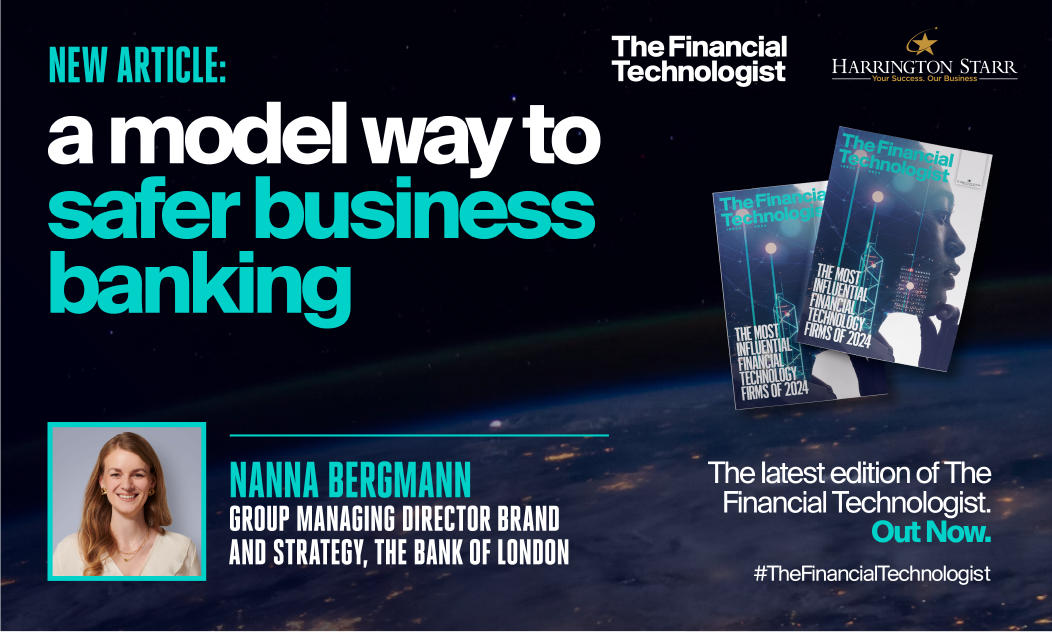Download your free copy of the latest Financial Technologist magazine here.
Questions about the impact of banks lending, investing, and leveraging client deposits have always been asked.
It matters.
Bank industry issues played key roles in two of the biggest economic crises of the past century – the Great Depression of the 1930s and the Global Financial Crisis of 2008. A year earlier in 2007, the first bank run on a British bank in 150 years occurred. The broader fallout over the following decade was significant – the Office for Budget Responsibility estimated that by end-January 2018, UK government interventions alone cost the public £23 billion overall. It’s a global issue. There have been extensive fines, with 10 banks worldwide paying out more than $200 billion over the same period.
The past year saw further upheaval.
In early 2023, the US financial system faced its worst turmoil in more than a decade, with three regional bank failures costing the Federal Deposit Insurance Corp (FDIC) more than $30 billion.
Sure, insured depositors had a level of protection. The FDIC currently guarantees deposits of up to $250,000 per person, per bank. What about those without deposit protection? By some estimates, they represent more than $8 trillion, or nearly half of all US deposits. In Europe, it is estimated that some 60% of all deposits are not covered by any form of guarantee.
In the UK, the Financial Services Compensation Scheme (FSCS) helps protect customers from losing some or all of their cash if authorised financial services firms go under. It protects up to £85,000 of savings per individual, per financial institution (which may encompass more than one bank), and £170,000 for a joint account. It also covers mortgages, insurance and investments. This is all part of its mission to provide a trusted compensation service and help raise public confidence in the financial services industry.
The latest FSCS Annual Report shows almost £1 billion was paid out in just 24 months.
The ongoing need for protection seems clear.
And yes, this is a delicate subject, as the question of moral hazard must be addressed.
Protection for customers must not mean banks can take undue risks.
Given the importance of banking to every aspect of our lives, it is important to have public-backed and private-led measures that promote economic resilience, business development and appropriately help safeguard firms when things go wrong.
The stakes are high for everyone, everywhere, anywhere.
Several years after the global financial crisis in 2015, the Centre for Economic Public Policy Research published a paper: Leverage and Risk in US Commercial Banking in Light of the Current Financial Crisis.
“Our findings provide evidence that excessive leverage, both explicit and hidden off-the- balance sheet, rendered large banks vulnerable to financial shocks thus contributing to the fragility of the whole banking industry,” wrote authors Nikolas Papanikolaou and Christian Wolff.
Taken together, these events highlight how important ‘safety’ is in banking.
The European banking sector is reasonably strong in terms of key indicators such as capital, liquidity, profitability and asset quality. Yet even today, a question any business can be forgiven for asking is: why can’t my money in a bank be secure and there when I need it?
Let’s be clear. There is an absolute need for bank lending. As Andrew Bailey, the Governor of the Bank of England said in a speech mid-February 2024, bank lending supports an economy.
There is also scope for ‘narrow banks’ or 100% reserve banking which hold all client money with their central bank.
It matters too because how we bank and pay is becoming more digital by the day.
“We have entered a new, dangerous era for finance where the centuries-old banking practice of investing in long-term assets backed by short-term deposits is failing,” wrote Alex Lipton and Alex Pentland in a viewpoint for Scientific American after the SVB collapse – Social Media is Rewriting the Banking Playbook.
When Northern Rock failed in 2007, it faced daily outflows of 5% of its deposits. When Silicon Valley Bank failed in 2023, it saw a single-day outflow of 25% of its deposits.
The “first part of a cure”, Lipton and Pentland say, is to break commercial banks into narrow and fractional banks, separating day-to-day financial services from the business of making loans. “Narrow banks that do only day-to-day operations and make their money from small fees can’t go broke because of runs on another bank.”
Banking on Basics
As a response to the changing markets and increasing regulatory requirements, full-service banks generate significant levels of complexity and risk.
That said, we are not arguing that all banks should be ‘narrow’ banks or ‘safe banks’.
As a Harvard Business Review viewpoint said in the same month SVB collapsed: “The truth is that we don’t need more traditional banks – we need different kinds of banks.”
One driver that led to The Bank of London came from the many frustrations our founder and CEO, Anthony Watson CBE, endured trying to set up a business bank account.
Accounts took months to open. Paperwork, delays, financial and time-to-market costs were just part of the headache. Incumbents in a closed club showed little interest in being a partner with business growth needs.
He saw an opportunity to do things differently, given the flow of money between the UK, the EU and US is controlled by fewer than one hundred banks. That equates to roughly 75% of the world’s spendable money.
Integral from the outset was a desire to better-manage complexity and risk. It started with a ‘safer-by-design' approach whereby no client money is lent, invested or leveraged. The reserve banking model used at The Bank of London means deposits are simply held at the Bank of England.
Everything in the past has largely been designed to serve a few, rather than us all.
It does not have to be this way. The complex can become simple. Being different is OK.
Download your free copy of the latest Financial Technologist magazine here.







